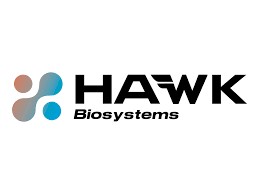QF-Pro is a technology developed by Hawk Biosystems, which quantifies protein functionality within tissue samples. Elena Castellano, Research Partnerships at Hawk Biosystems explained that QF-Pro relies on a two-site immunofluorescence assay with primary and secondary antibodies conjugated to specific fluorophores to measure protein interactions and modifications. Castellano addressed three key areas: the basics of the technology, research applications, and its clinical value.
QF-Pro examines protein expression and protein functionality by combining spatial localisation, protein-protein interactions, and post-translational modifications. It relies on immunofluorescence to explore and generate images based on the protein interaction between two different proteins. Furthermore, the QF-pro score quantifies the level of interaction, which demonstrates the high sensitivity levels of this technology. Castellano also mentioned that this technology can be integrated into any laboratory and the assay can be opened to any target of interest.
Regarding the application examples, the first one analysed the interaction level between E-Cadherin and Beta-Catenin which is an intracellular interaction. These two proteins were targeted with specific primary antibodies and then conjugated with secondary reagents. Next, the assay was performed in FFPE tissue samples of breast cancer patients. In one patient although both proteins were expressed, there was no interaction between them whereas other patients did display interactions.
Another case explored the inhibition of certain interactions. For instance, an experiment looking at the interaction between TIGIT and CD155 treated the cell line with a blocking antibody to disrupt its interaction.
Castellano discussed the clinical validation QF-Pro has in the field of immuno-oncology. She elaborated that there’s an unmet clinical need in immuno oncology because only 12 – 25% of patients with solid tumours respond to immune checkpoint inhibitor therapies. Castellano and her team aim to tackle this.
QF Pro was validated in a clinical study with 188 NSCLC patients. The principal objective of the study was to investigate the interaction level between PD-1 and PD-L1 using the QF-Pro. The results showed that high levels of PD1-PDL1 interaction correlated with better responses to immunotherapy. QF Pro outperformed traditional PDL1 TPS scoring in predicting response to immunotherapy. To corroborate these findings, Castellano performed the same experiment in an independent cohort of 67 patients and extended the biomarker analysis to PD-1/PD-L1 and CTLA4/CD80.
Overall, the technology can perform sequential rounds of staining, allowing the analysis of multiple biomarkers in a single sample, which could assist with personalised treatment decisions. Castellano concluded with the following statement: “We have proven that with QF-Pro, we could triple the immunotherapy checkpoint inhibitor therapies efficacy and potentially we could double the survival rates of these patients.”
